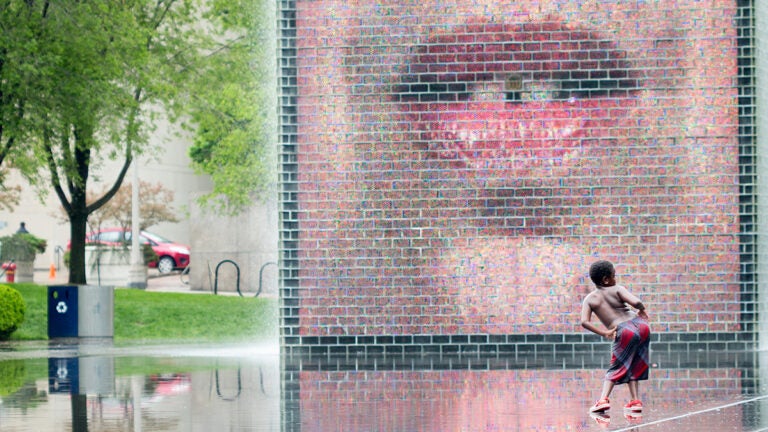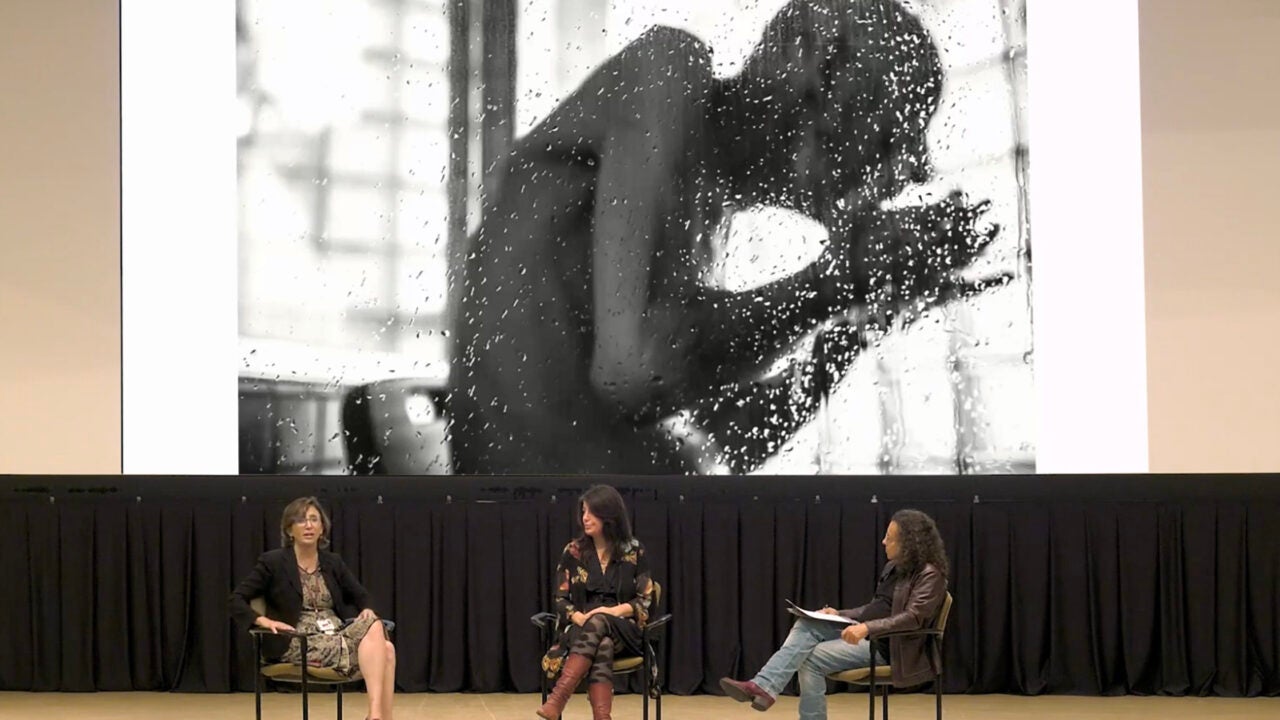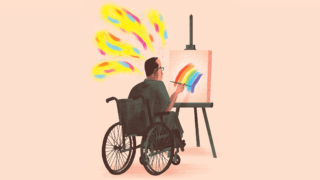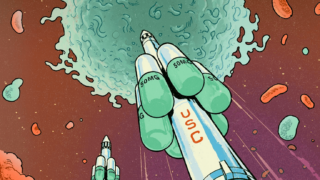
“The Bump” is a photograph taken by Carolyn Meltzer, dean of the Keck School of Medicine of USC. (Photo/Courtesy Carolyn Meltzer)
Art in medicine helps doctors, too
At USC, weaving art into medical practice benefits doctors and patients.
Carolyn Meltzer, dean of the Keck School of Medicine of USC, is a leading scholar in neuroradiology. But on her website, carolynmeltzer.com, you won’t find any information about her extensive research in brain imaging. Instead, you’ll find her portfolio of fine art photography.
Meltzer, whose art has been featured in more than 50 solo and group exhibits in the United States and Europe, believes that the visuospatial skills she has cultivated through photography strongly inform her work in radiological imaging. “Having this artistic outlet makes me a more effective colleague and leader on the medicine and scientific side,” she says.
Meltzer’s experience is one example of how the arts can be a vital resource for medical practitioners. Artistic endeavors can sharpen diagnostic skills, help physicians tend to their own wellness and deepen understanding of the human condition.
“I don’t think you can be a fully compassionate doctor without having some of the skills that can only be learned in humanistic and artistic pursuits,” says Pamela Schaff, professor of clinical medical education, and family medicine, and pediatrics (educational scholar).

Schaff is the director of Keck School of Medicine’s Humanities, Ethics, Art, and Law (HEAL) Program, which has been weaving the arts into the core curriculum for medical students since its founding in 1985. The multipronged program includes art exhibits by — and discussions with — artist-patients whose artwork explores the experience of living with diseases that students learn about in their classes. “When you’re just reading a textbook, or just even interviewing a patient, you don’t understand diseases in as fully realized a way as when you’re also seeing the artwork that has been born out of the experience,” Schaff says.
Fourth-year medical student Tejal Gala has enjoyed immersing herself in the artist-patients’ exhibits in the medical school’s Hoyt Gallery and participating in the discussions. “It’ s a wonderful reminder that patients are more than a constellation of symptoms,” she says. “When we really pay attention to their emotions and how they’re feeling, we’re tapping into the art of medicine just as much as the science.”
The HEAL Program also offers medical students the opportunity to participate in the arts through creative writing workshops and music lessons. Gala herself is a photography enthusiast who recently published Keck in Bloom, a coffee table book of photos of the varied plant life on USC’s Health Sciences Campus. She found that exploring nature with her camera was a powerful stress reliever.
“Having time to engage the arts is an important part of … taking care of ourselves, so we can be there for our patients,” Meltzer says.
The dean hopes to bring USC’s many well-established arts in medicine programs under a more cohesive umbrella. She also envisions launching new interdisciplinary ventures between the Keck School of Medicine and USC’s arts schools. In February, the Department of Radiology debuted the Center for Advanced Visual Technologies in Medicine, which adapts novel applications of digital and 3D visualization techniques to patient care, education and research. The center connects creative technologies across multiple units and schools, including the USC School of Cinematic Arts.
Arts collaboration “is a strategic priority for the Keck School of Medicine because it creates unity and supports our practitioners and our patients,” Meltzer says.



